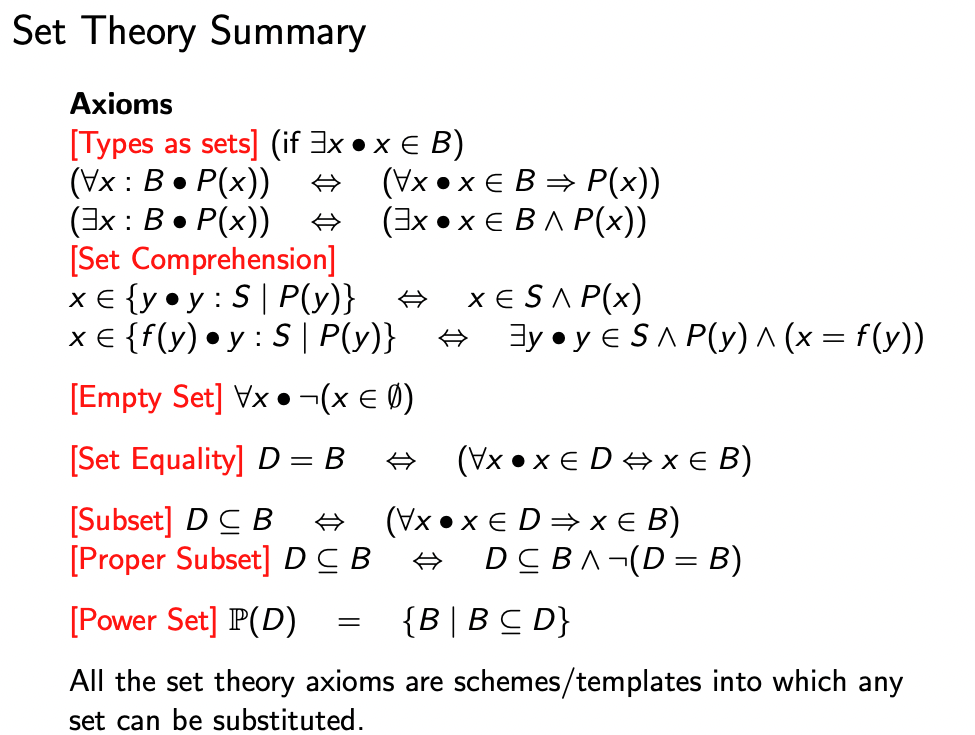Set
A set is a well-defined, unordered collection of distinct objects. Each object that appears in this collection is called an element (or member) of the set.
Examples (using set enumeration):
- is a set that contains three elements.
Empty Set
The set contains no elements and is known as the empty set. We often use as the symbol.
Remark: Cardinality of : Number of elements in a finite set , denoted by Ex:
Set-builder Notation (Set Comprehension)
The idea is to define a set using a predicate; in particular, the set consists of all values that make the predicate true.
Set Operations
Union
The union of two sets and , written , is the set of all elements belonging to either set or set (or both). Symbolically we write
Intersection
The intersection of two sets and , written , is the set of all elements belonging to both set and set . Symbolically we write
Set-difference
The set-difference of two sets and , written (or ), is the set of all elements belonging to set but not . Symbolically we write
Complement
The complement of a set , written , is the set of all elements not in . Symbolically we write
Prove Subset
To prove that , prove the universally quantified implication:
Prove Equal Subsets
To prove that , we prove that and .
SE212

Axioms
Types as sets: if
Set Comprehension
Empty Set
Universal Set The universal set consists of all the values of concern in any discussion (domain)
Set Equality
Subset
Proper Subset
Power Set The power set of a set is the set of all of its subsets. is the function that returns the power set of a set.
Other
A singleton set is a set consisting only of one element.
Axioms for Set Functions
Set Union Set Intersection
Two sets, and , are disjoint if their intersection is empty, i.e. . Serendipity → Disjoint Set Union
Absolute Complement is the universal set.
Set Difference Note that for set difference, the order of operands MATTERS, i.e.
For example, let , and .
Cartesian product (Set Product)
Also see Binary Relation for the list of other properties.
See Transformational Proof on Transformational Proof on Set Theory.
Related
- Set for using them in programming